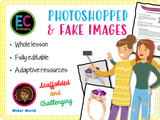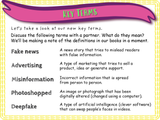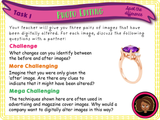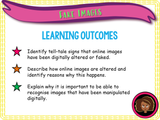Photoshopped and Fake Images
Photoshopped and fake images PSHE Lesson. A one hour-long, very detailed, fully resourced PSHE lesson suitable for KS2. In this lesson, the students will discuss the different ways that images can be digitally manipulated online. We will learn about deepfake artificial intelligence software and the dangers it poses with regard to the spread of fake news and misinformation.
Looking to save money? Check out this value bundle
Photoshopped and fake images PSHE Lesson. A one hour-long, very detailed, fully resourced PSHE lesson suitable for KS2. In this lesson, the students will discuss the different ways that images can be digitally manipulated online. We will learn about deepfake artificial intelligence software and the dangers it poses with regard to the spread of fake news and misinformation.
Looking to save money? Check out this value bundle

























